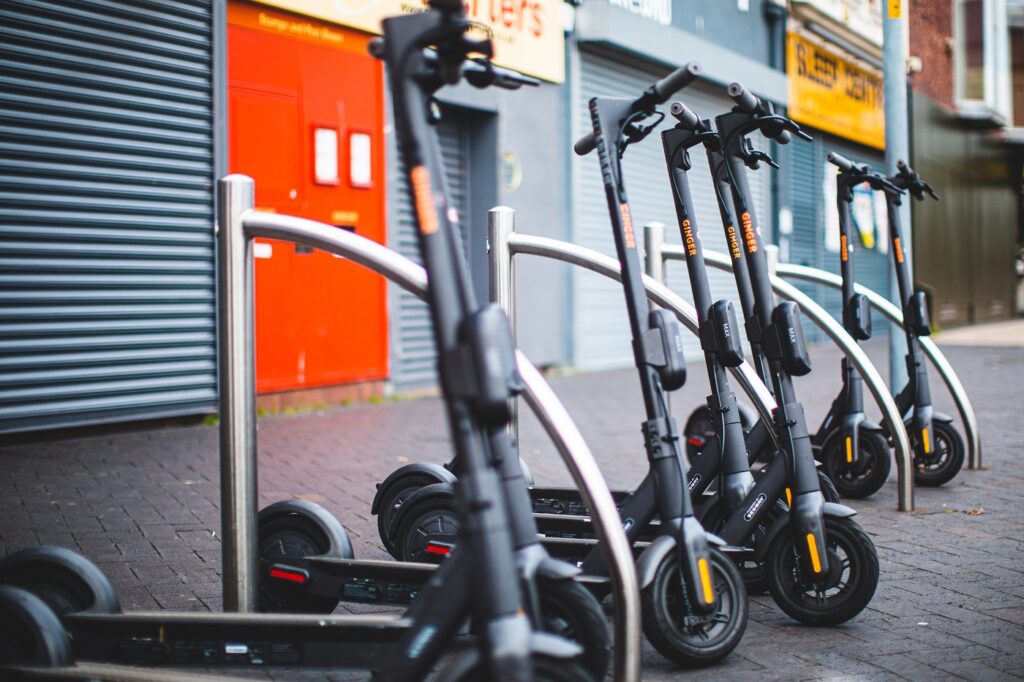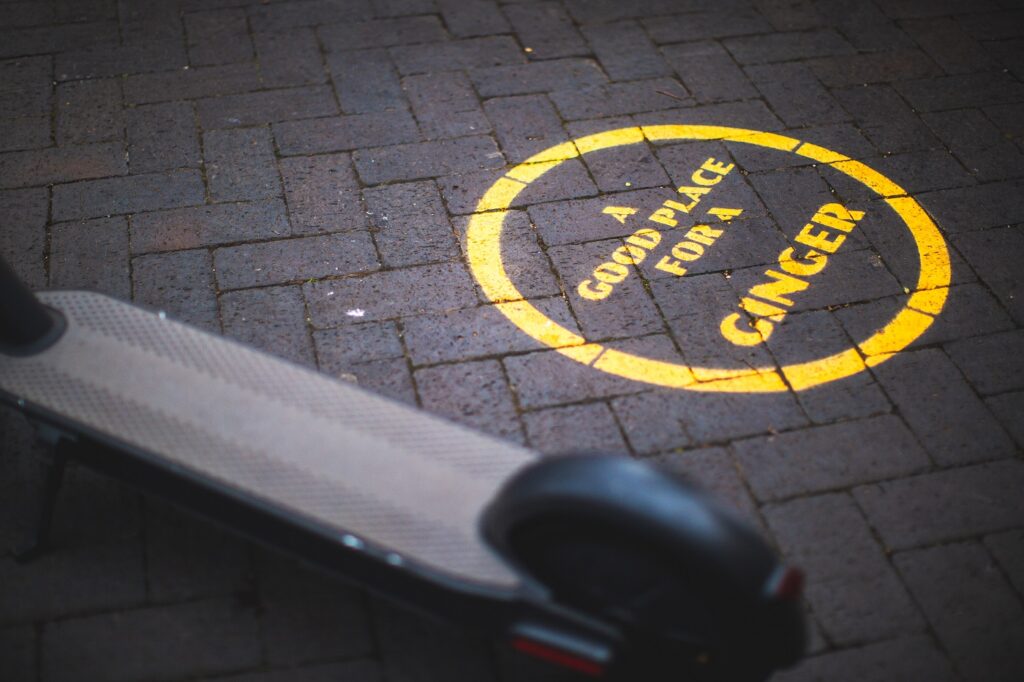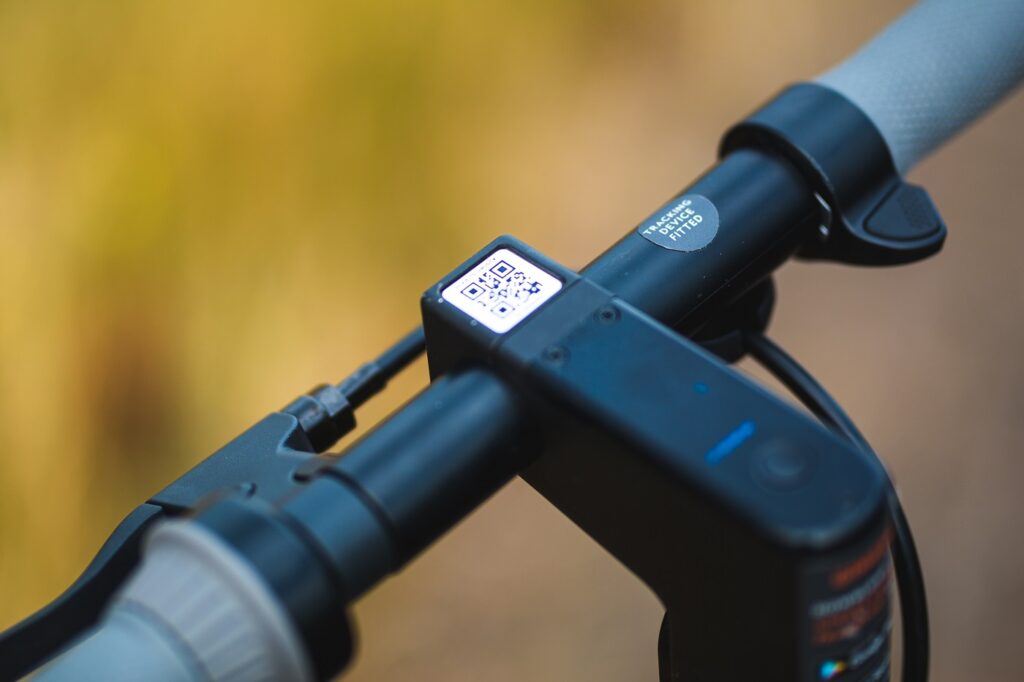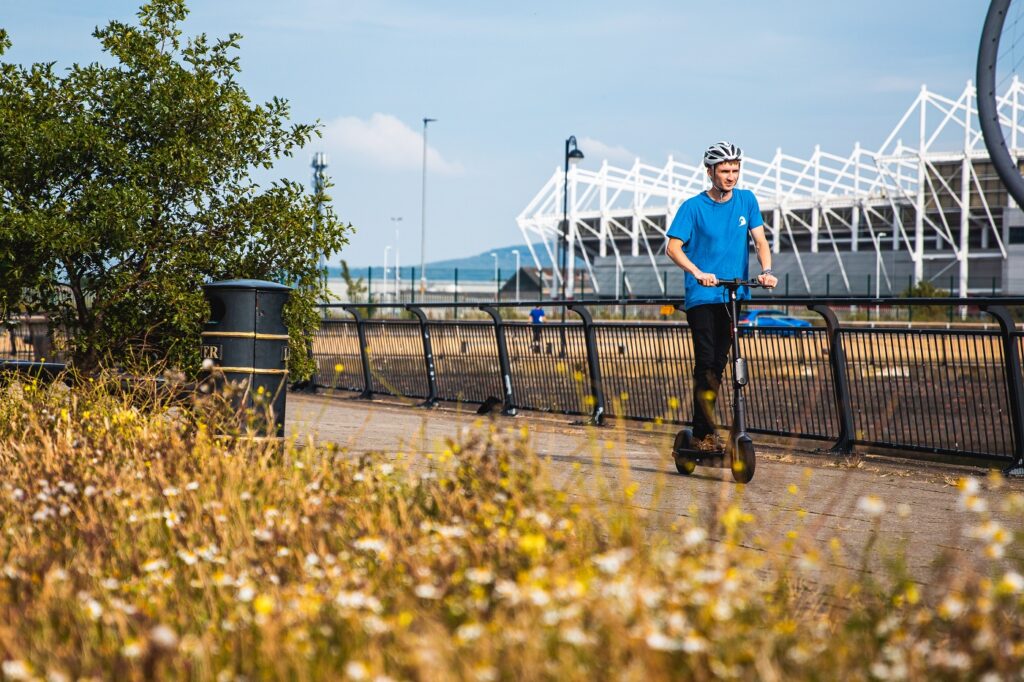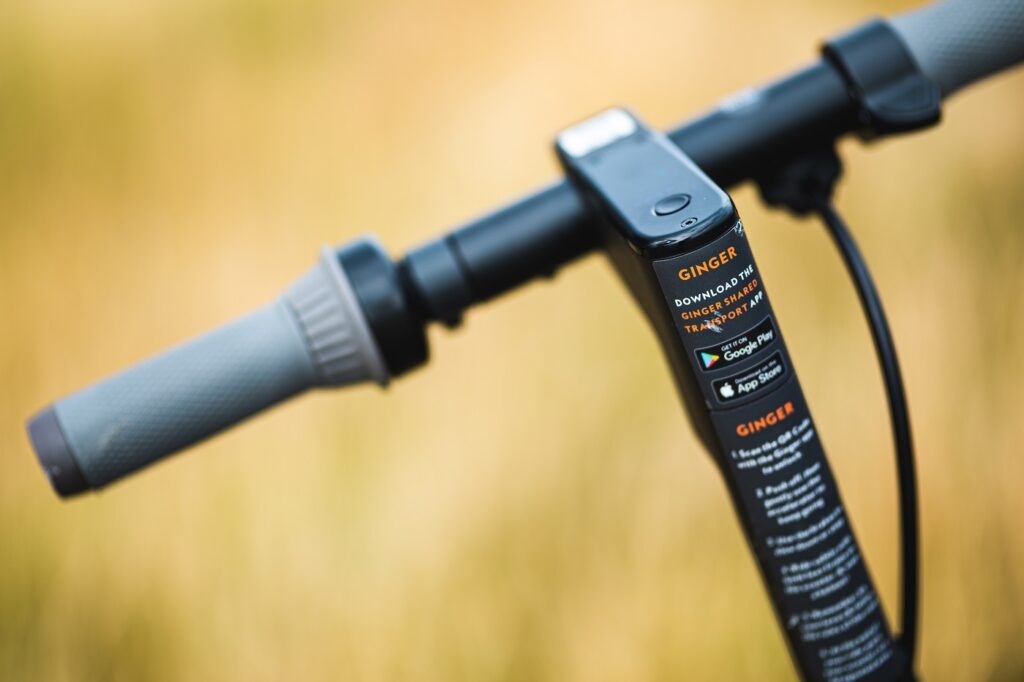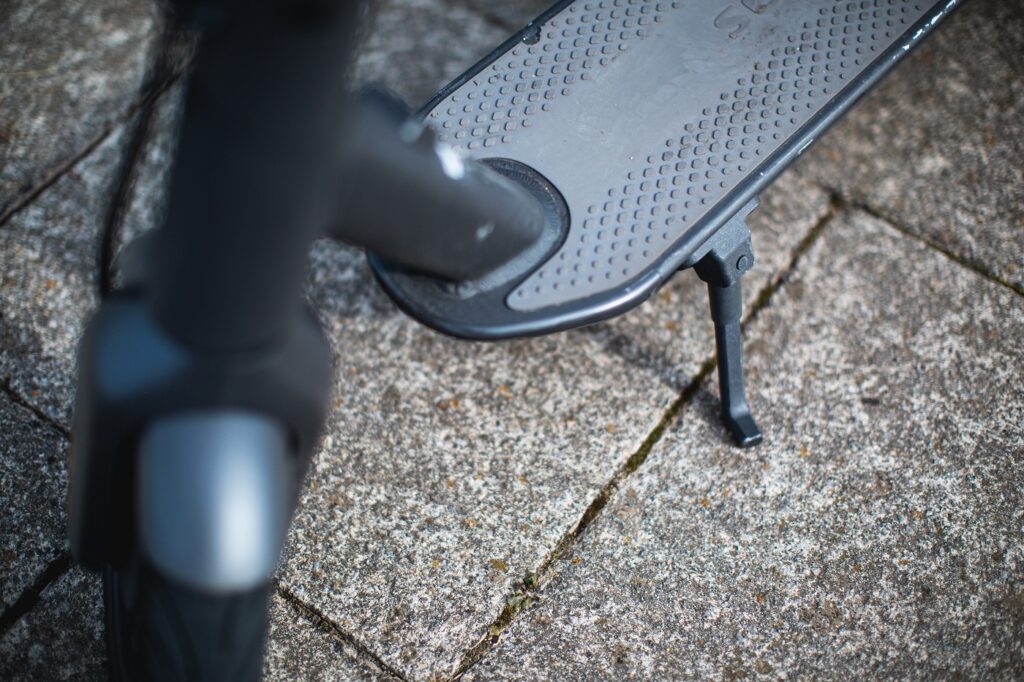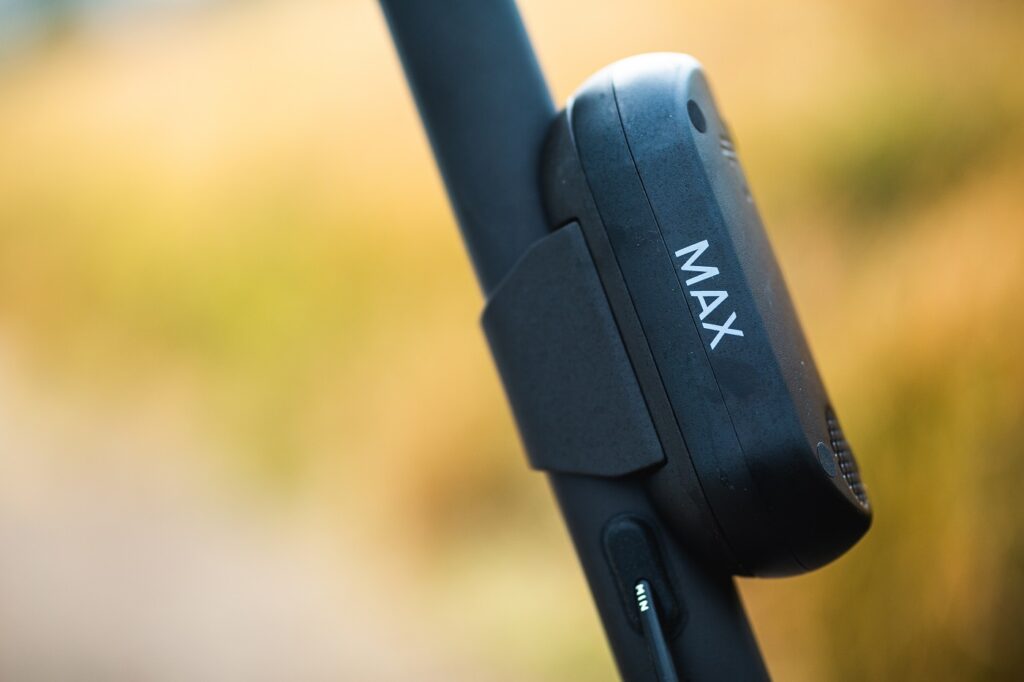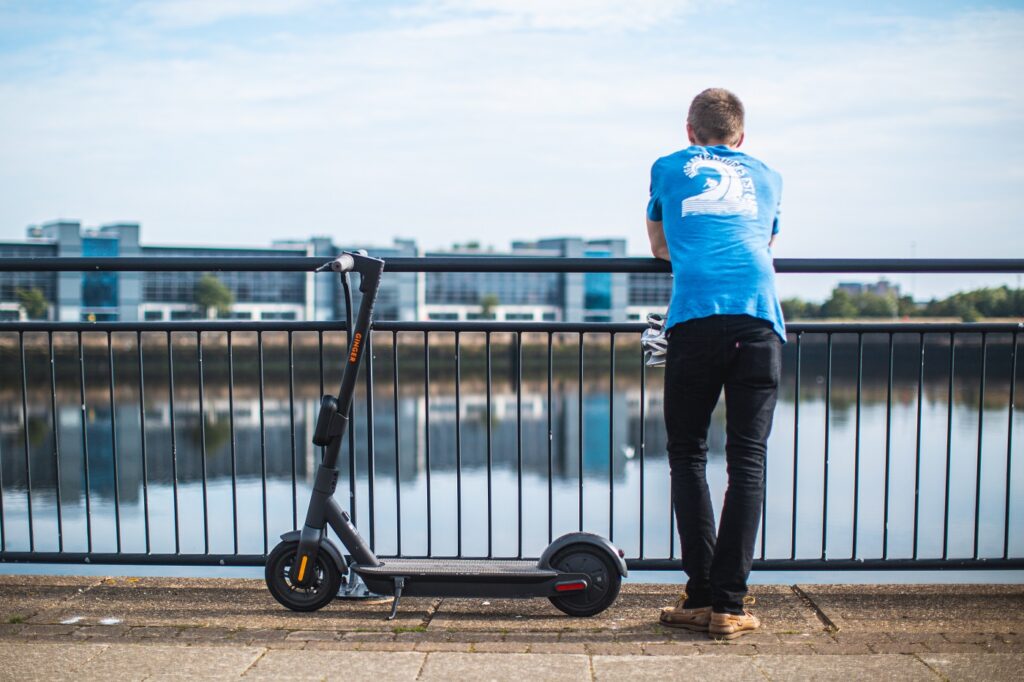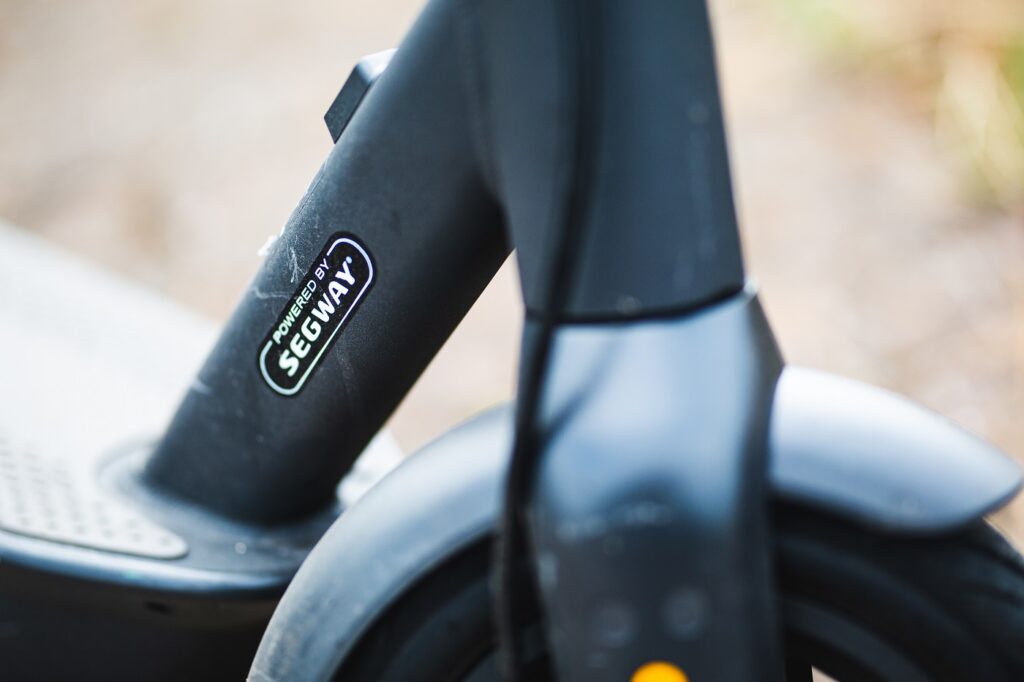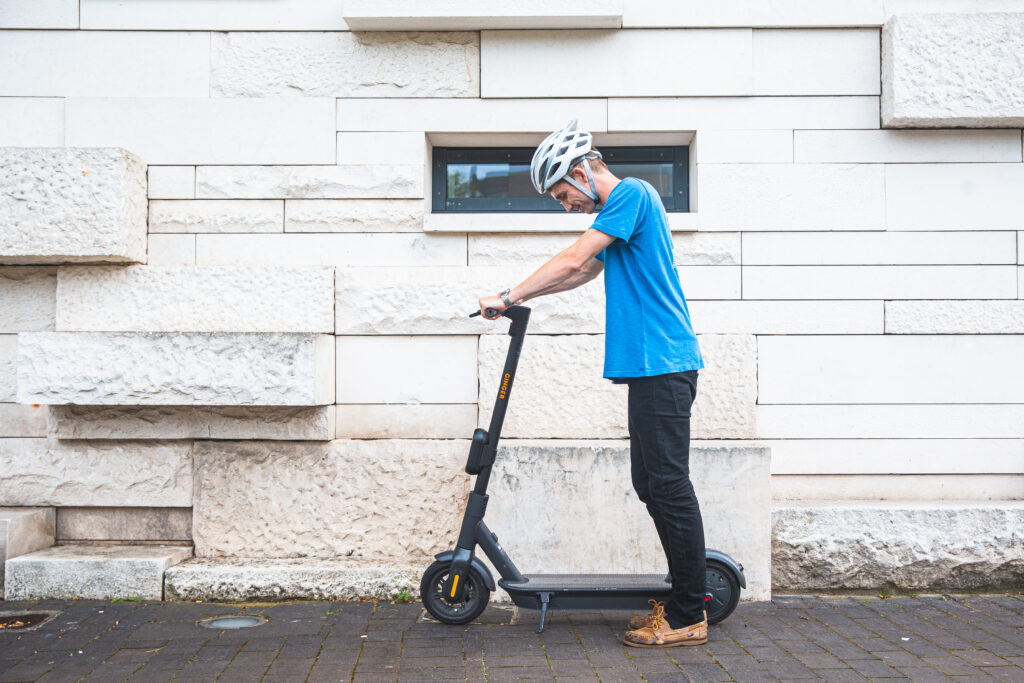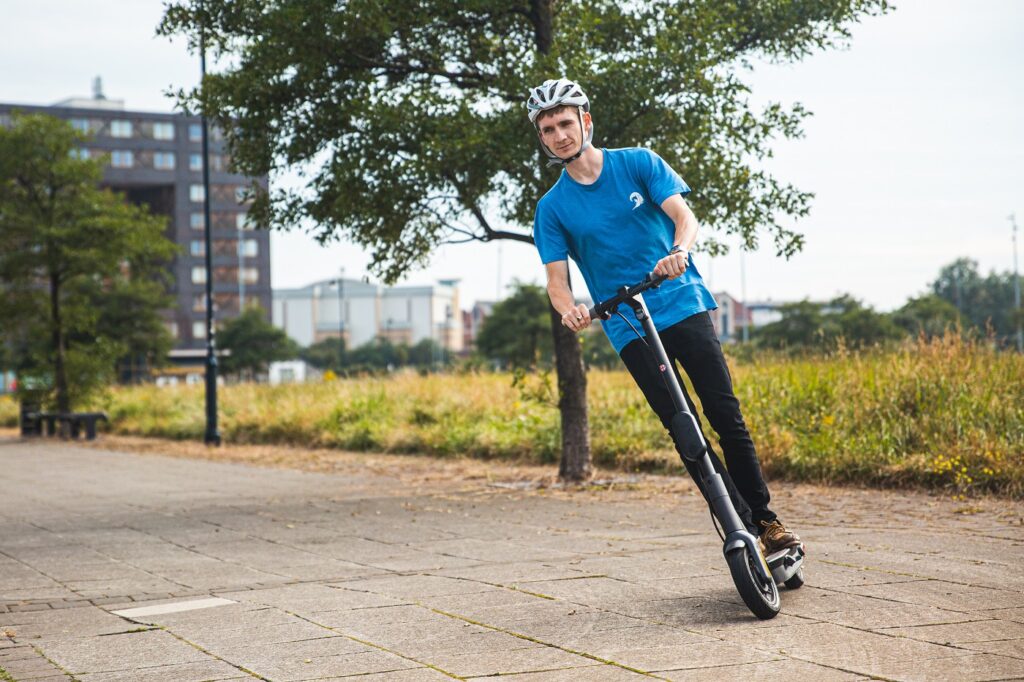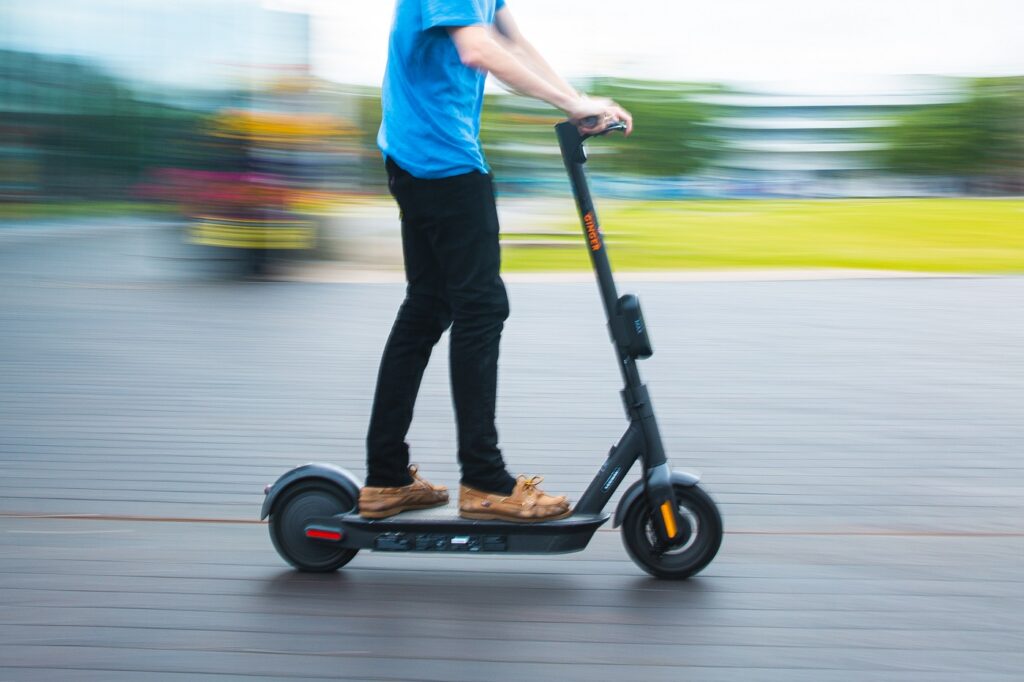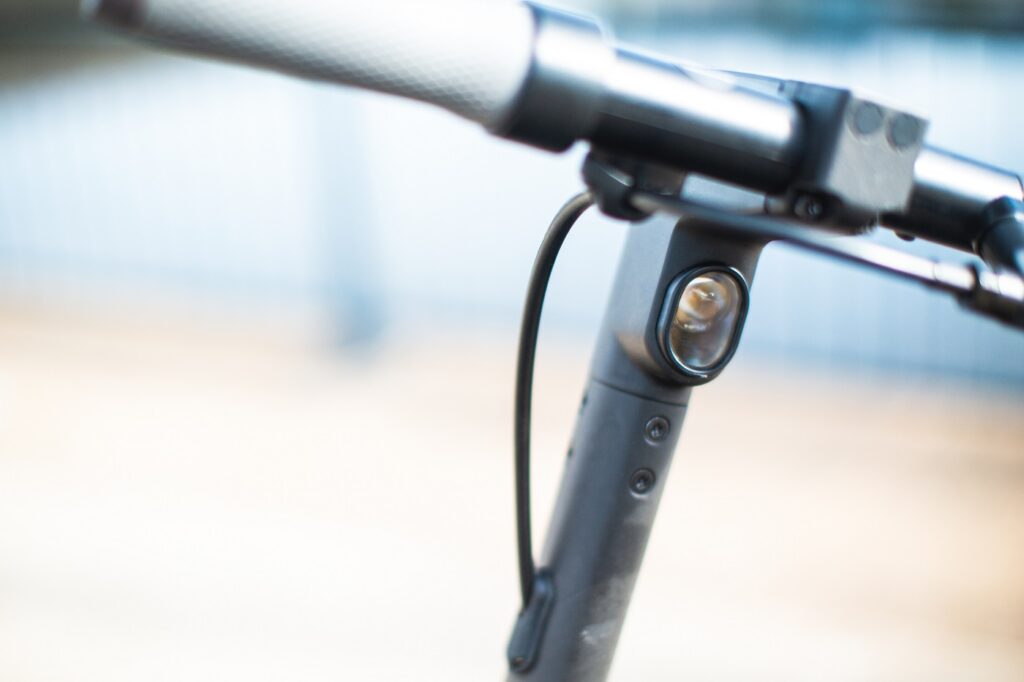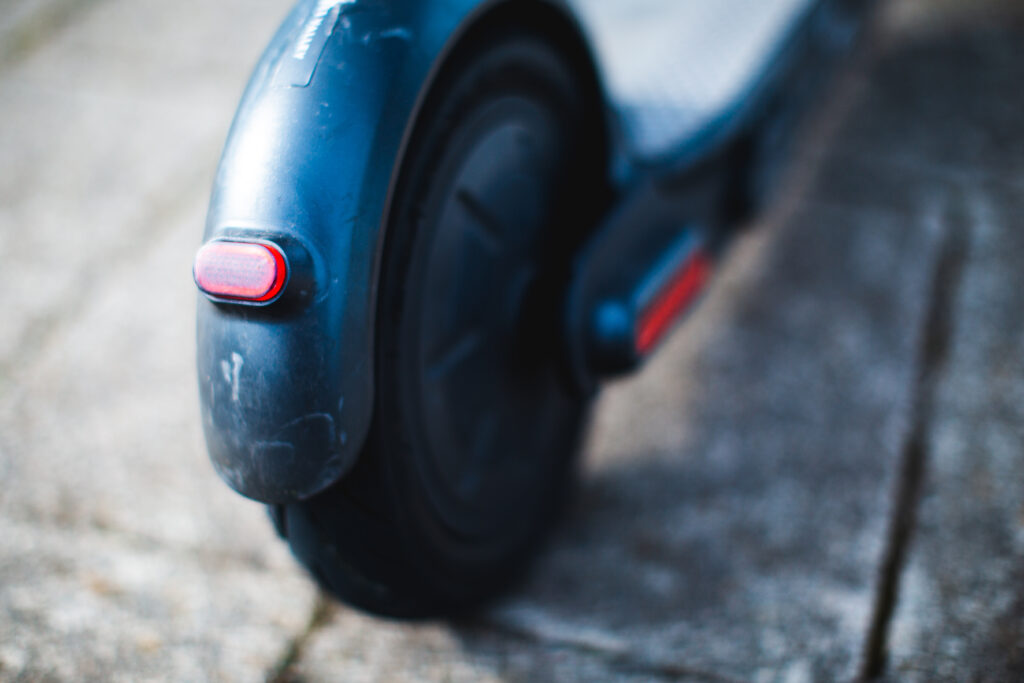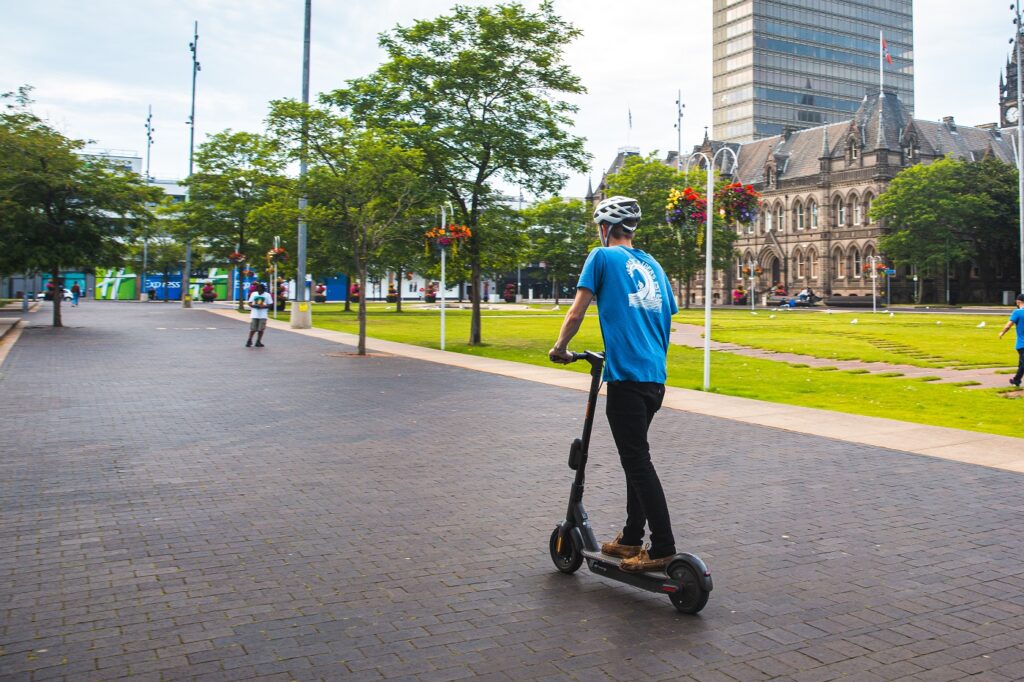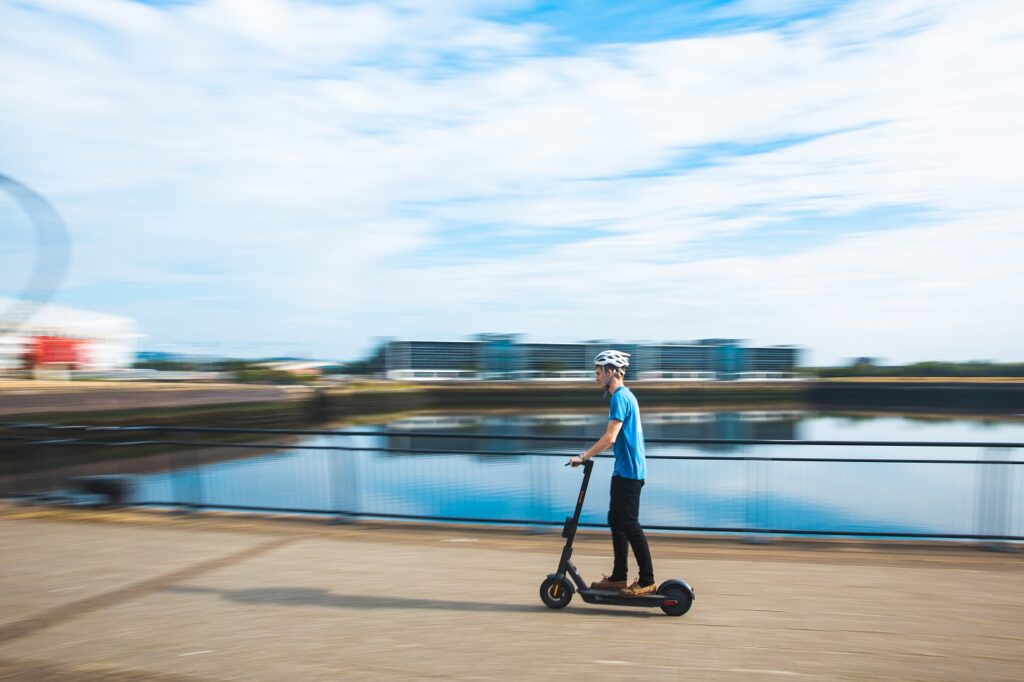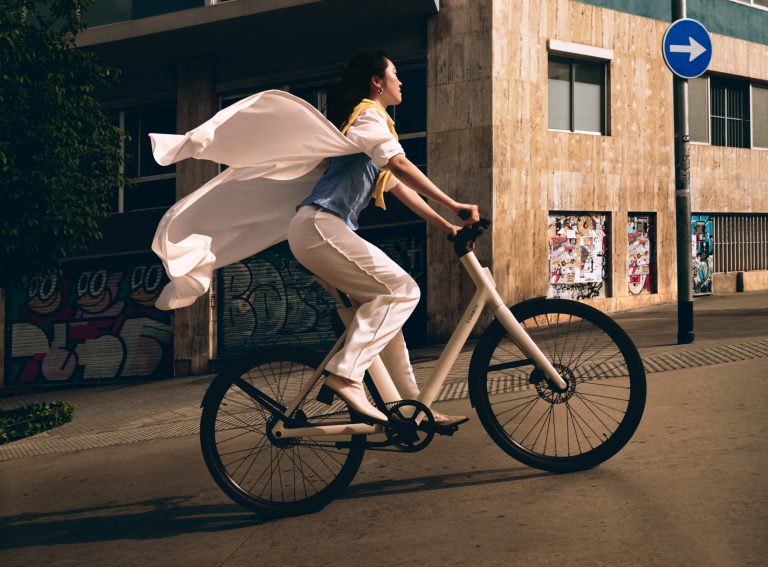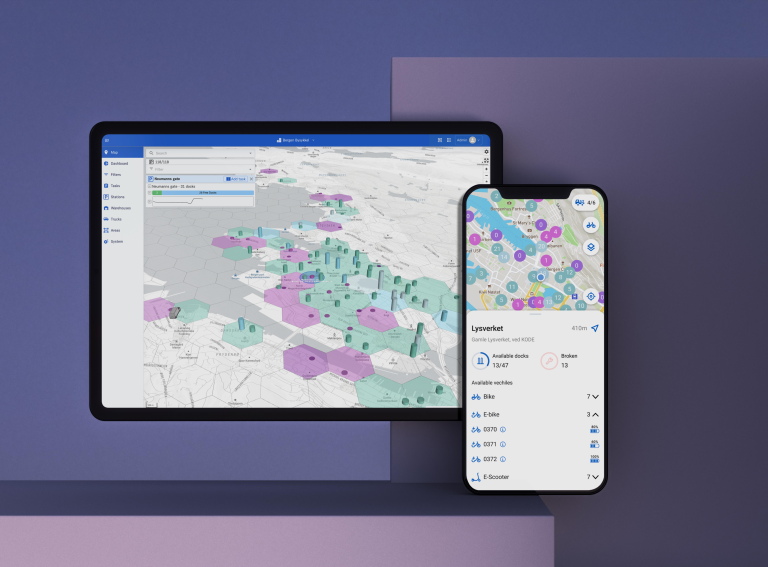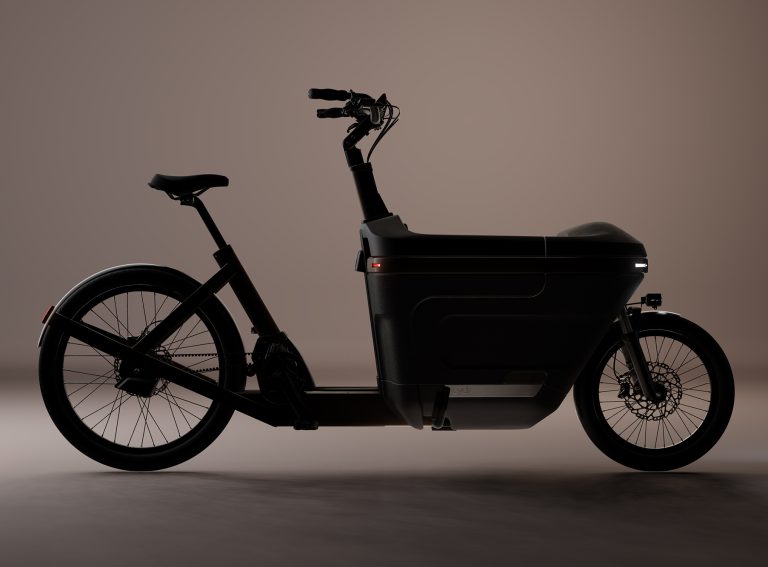Introducing Graeme, Zag’s chief test pilot. It’s a position awarded somewhat by default, given that he’s the only Zag team member to have (legally) ridden an e-scooter on British roads to date. He’s 26 and from Lincolnshire, web developer by day and somewhat daredevil mountain biker by weekend.
We sent Graeme to test out Ginger’s Middlesbrough e-scooter programme. Here are his top 10 things to look out for when riding electric scooters in the Tees Valley town.
1: Beware the cabbies
“The area where the scooters are kept seems a bit odd,” says Graeme. “It’s right outside a Cash Converters and next to a taxi rank, which might get a bit uncomfortable if the cabbies see this as a threat to their business. There’s no obvious signage to find your way to this pick-up point; you have to sort of track it down via the app. And there’s nowhere immediately close by to have a go on the scooters without hitting anyone or anything if you’re a bit wobbly, whereas two hundred metres down the road are big concrete areas where you could fall off in peace. There is a nearby bus stop, though, so this could be the perfect place for students coming in by bus who are headed up to the college, which is quite a distance away.”
2: The app: the good bits…
“All the magic happens with the app, which is very simple to use. It gives you a straightforward tutorial on how to use the scooters and shows you various states of charge for the scooters in the parking area.
“You use your phone to scan the QR code of your chosen scooter (located on top of the handlebar stem), make sure your virtual wallet is topped up, and off you go. There are different pricing levels, from the basic £2 for 20 minutes to longer time periods which work out cheaper per-minute.
“The scooter doesn’t seem to be locked as such when you arrive but if you touch it without unlocking via the app, an alarm goes off and everyone looks at you like you’re a thief.”
3: …and the bad bits
“There are some really frustrating shortcomings with the app. That brilliant starter tutorial, for one: I could not figure out how to watch it again after that first play. I’ve tried closing and re-opening the app. Nada.
“There was no proper age verification or driving licence check, despite these being legal requirements before riding one of these scooters. Ginger has a person stationed by the scooters to check you out before you ride. That doesn’t seem very technological or scalable.
“Once you’ve confirmed the scooter you’re booking, the app display switches to a kind of pointless Google Maps. It doesn’t do directions. It has a timer to show how long you’ve been on the scooter but it doesn’t tell you how much you’ve spent so far, like you’d get in a taxi. At the end of your ride, you don’t get a summary like you would from Uber. In fact, I got no confirmation I’d been billed at all – no receipt, no email. Nothing to claim the ride back on expenses. Not great for commuters.
“Last gripe: you can’t tell from the app which scooter in the parking area has which state of charge. The only way to find out is to go to each scooter and look at its little onboard screen. This would be a pretty easy fix – it just needs the scooter ID on some large stickers on each scooter.”
4: Controls
The scooter itself is the sturdy Segway-Ninebot Max G30, which has been designed and built by Xiaomi with commuting in mind. Good start.
“If you arrive new to e-scooters from bicycles, the controls will seem counter-intuitive in their placement,” says Graeme. “On the left is a twist dial which looks like the accelerator but is, in fact, the bell. To actually go, you have to squeeze a lever on the right-hand-side. So before setting off on any drag races, remember which is which or you’ll look rather daft.
[We are not condoning drag races on public streets. Obviously. RR]
“Braking is done via a single lever. There are actually two brakes: the front is a mechanical drum-brake, while the rear is electronic. They seem to activate together and are applied really smoothly, which gives you a great sense of confidence that you’re not going to get pitched over the handlebars like you would be by only hitting the front brake on a bike.
“I couldn’t see any way to adjust the handlebar height, but that is understandable on a one-size-fits-all rental unit.”
5: Ergonomics
“The deck has a decent amount of space. I have pretty wide feet and I could get both on side-by-side. There’s no doubt where the scooter comes from as “Segway” is stamped into the deck in large letters – though of course this is basically a Xiaomi product now.
“The whole scooter feels robust and reassuringly heavy; it certainly doesn’t feel flimsy. All the weight is very low down so you don’t notice it while you’re riding. But if you try to pick the scooter up, or jump up onto a pavement, it’s like trying to haul up an anchor. That will hopefully discourage riders trying to do tricks on them or bump up kerbs onto footpaths.
“The handlebars could be a little wider to ride comfortably. If you take one hand off, it’s noticeable how much that affects the direction. Twitchy. It certainly wouldn’t be safe to use your phone while riding – though how you can check your navigation without your phone, I don’t know.”
6: Ride and handling
“The scooters in Middlesbrough are limited to around 11mph but they feel faster than that.
“I liked it. It’s an easy machine to control. The handling is pretty competent. It has proper pneumatic tyres so my knees weren’t shot to pieces. It accelerates well without being savage enough to throw you off. It starts off gently, even if you slam the throttle on. It’s fun without being dangerous.
“The scooter is also pretty manoeuvrable. You can easily weave between around tight spaces and, if you slow right down and then want to pick up again, it doesn’t hang around.
“As for lean angles…well, check out the photos. I very much doubt the average commuter will be pushing it to the limits of grip like I did, so it’s going to be a safe option for most riders. How those tyres will fare in wet weather, I’m not sure. Same problem with bikes, of course, though the extra weight may help.”
7: Battery life
“Nothing to worry about. The manufacturer reckons around 40 miles to a charge, whereas independent testing indicates closer to 25 miles. Either way, I used one for a good hour or so and barely used one battery bar on the display. You’ll have no worries doing decent distances across town on them. No such thing as range anxiety with these.”
8: Geofencing
“Geofencing is how the operator ensures the e-scooters aren’t ridden in dangerous places, and that they’re parked in the correct spots at the end of a trip.
“I wanted to check out how it worked so I headed for the dual carriageway, which was geofenced. There’s an underpass, which still fell into the red zone. The motor stopped providing power but it didn’t lock the wheels, so you could still kick the scooter along. And there was a bit of a delay, which meant I could get a fair way into the red zone before it stopped – and then had to get a fair way out again before the motor came back online.
“When you hit the red zone, the scooter starts beeping loudly, like a car alarm. It doesn’t stop you moving but people do stare at you.
“The issue with the big dual carriageway is that only the junctions appear to be red zones, rather than the road itself. That means you could push the scooter through the geofenced junction and then get back on the power along the road. I think these loopholes are being closed up but really, that should have (and could have) been done before the trial went live.”
9: Safety and comfort
“Perceived safety on these scooters is much more to do with our roads than the build of the scooter. You’re very exposed and so you feel vulnerable. There is a brake/tail light on the back and a front light too, but the rear light is very low down so there’s nothing at the eyeline of car-drivers coming up behind you. If you’re wearing dark clothes and trying to hold position against cars and buses, that could be very hairy.
“Using decent segregated micromobility-specific lanes (ie cycle lanes) would make all the difference.
“In terms of all-weather comfort, I’m not sure how these will fare. In the summer, great. In the winter or in bad weather, you’ll get covered in muck. The same issues apply to riding a moped or cycling of course, and people still use those all year round, so these are not insurmountable problems.”
10: Value for money
“The big question, then: is Ginger worth the money? My answer is yes – with a few caveats.
“First, the trial scheme is pretty small. That means there’s not much chance of there being a scooter available near the office when I leave work at the end of the day (if I worked in Middlesbrough). A bigger programme with more scooters might help; as might more pickup locations or personal lease scooters.
“Second, the unpredictability of availability may make it difficult to budget. I know how much it will cost to drive to work every day, for example. But I don’t know if there’ll be a scooter available when I need it or if I’ll have to take a cab or jump on a bus instead. Again, this is more of an issue on a small-scale trial and perhaps for people like me who are sort of set in their ways.
“Ginger’s programme isn’t perfect but a lot of its issues seem to be because the scheme was rolled out so damned quickly, weeks ahead of the big operators. These are relatively straighttfoward issues to solve.
“Would I use Ginger’s e-scooters if I lived or worked in Middlesbrough? Definitely. I know they’re not meant replace public transport but I would much rather use an electric scooter than be crammed into a metal can with a bunch of people who may or may not be carrying some contagious virus.
“More than that, I’d use them when taking the other half out to dinner. It would be a much nicer experience than squeezing into the Tube, quicker than walking, cheaper than a cab. Sold.”

